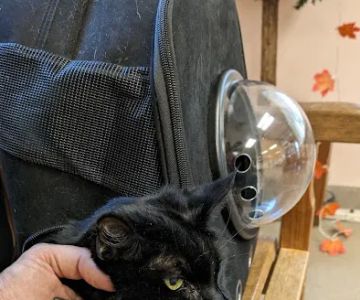How to Take a Veterinary Course: Understanding the Path to Becoming a Veterinarian
Deciding to become a veterinarian is a noble choice, one that requires dedication, passion, and an understanding of the steps required to succeed. Whether you're an animal lover or someone who wants to make a difference in the world of animal healthcare, pursuing a veterinary course is an exciting journey. This article will walk you through how to take a veterinary course, including the requirements, educational steps, and what to expect along the way.
1. Understanding the Role of a Veterinarian
Before diving into the specifics of veterinary courses, it's essential to first understand what a veterinarian does. Veterinarians are professionals who diagnose, treat, and prevent illnesses and injuries in animals. They may work with companion animals, livestock, or even exotic species. A veterinarian's role goes beyond medical care; they also offer advice on nutrition, behavior, and even animal welfare issues. Knowing the broad responsibilities of a vet will help you understand the importance of their education and the variety of skills they need to master.
2. Researching the Veterinary Course Requirements
To begin your path toward becoming a veterinarian, it's important to know what qualifications you'll need. In most countries, including the United States, veterinary education starts with a bachelor’s degree. While not all schools require a specific major, most recommend a background in biology, chemistry, or animal science to prepare for the rigorous veterinary school courses. In the U.S., after completing an undergraduate degree, aspiring vets typically apply to veterinary school, which requires passing the Graduate Record Examination (GRE) or specific entrance exams, depending on the school.
3. Completing a Veterinary Bachelor’s Degree
The first step is to earn your bachelor’s degree. While there is no set major for veterinary students, a degree in biology, zoology, or animal science is highly recommended. During this time, you’ll take foundational courses in biology, chemistry, and physics, while also gaining practical experience working with animals through internships or volunteer opportunities. This experience is essential because veterinary schools are competitive, and having hands-on knowledge will give you an edge when applying.
4. Getting into Veterinary School
After completing your undergraduate studies, the next step is getting accepted into veterinary school. Admission to veterinary school is highly competitive, so it’s crucial to excel academically and gain as much relevant experience as possible. Many veterinary schools also look for applicants who have worked or volunteered in animal clinics, shelters, or research environments. In addition to your academic record, schools may also consider recommendation letters, personal statements, and standardized test scores.
5. Completing a Veterinary School Program
Once you’re accepted into veterinary school, you’ll spend several years completing both coursework and clinical training. The typical veterinary program lasts four years and combines in-depth academic courses with hands-on experience in clinical settings. You’ll study subjects such as anatomy, pharmacology, microbiology, and surgery, among others. Veterinary schools also require students to complete clinical rotations, where you’ll work directly with animals under the supervision of licensed veterinarians. This period is critical for building the practical skills needed to care for animals in real-world settings.
6. Becoming a Licensed Veterinarian
After successfully completing veterinary school, the next step is to become licensed. In the United States, this involves passing the North American Veterinary Licensing Examination (NAVLE), which tests your knowledge and competency in veterinary medicine. Once you pass the exam and meet other state-specific requirements, you’ll be able to practice as a licensed veterinarian. Many veterinarians also choose to pursue additional certifications or specialize in fields like surgery, dermatology, or dentistry, which requires further education and training.
Conclusion: Start Your Journey to Becoming a Veterinarian
Taking a veterinary course is a long but rewarding journey that involves dedication, hard work, and a love for animals. From completing a relevant bachelor’s degree to gaining hands-on experience in veterinary school, every step is essential for becoming a competent and compassionate veterinarian. If you’re passionate about helping animals and ready to take on the challenges, pursuing a veterinary education is the right choice for you. Start researching accredited schools, gaining experience, and preparing for your future as a veterinarian today!











